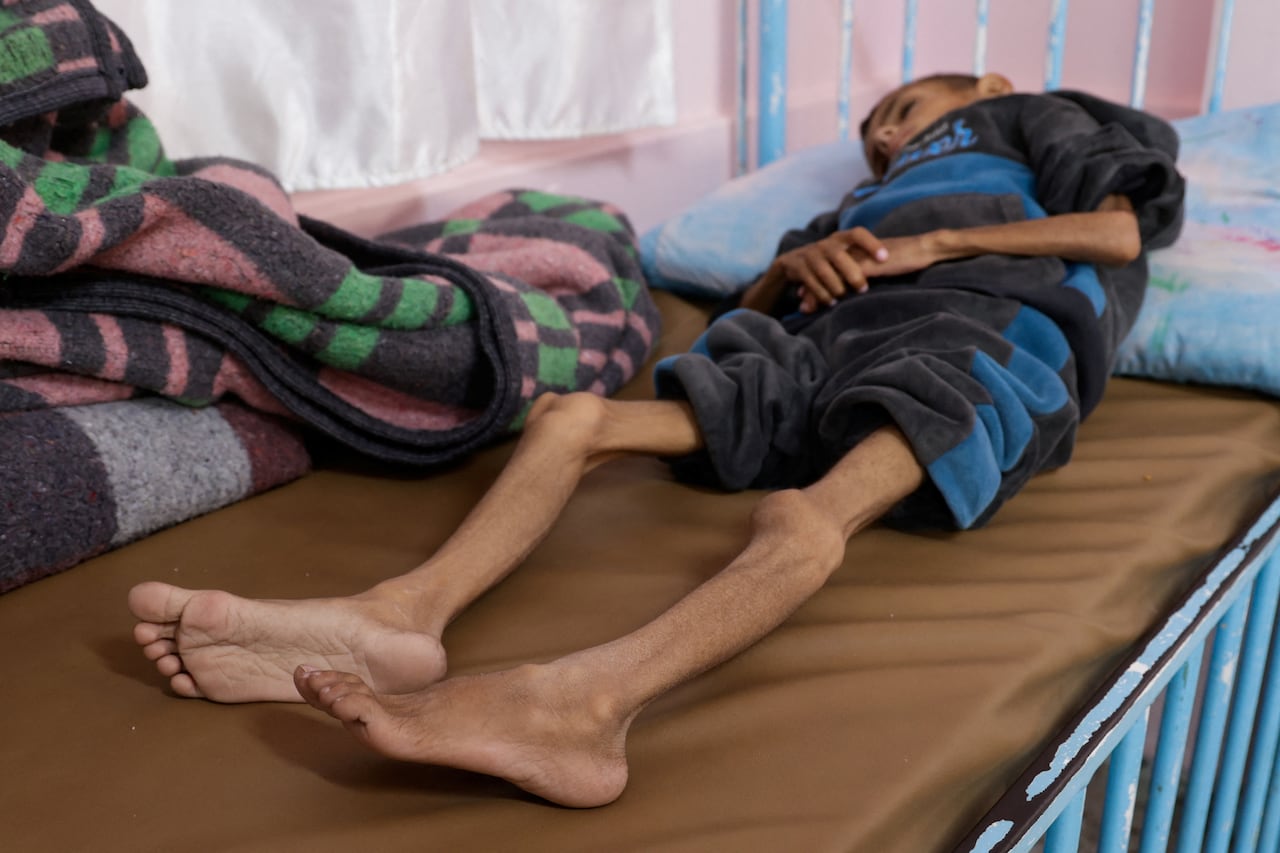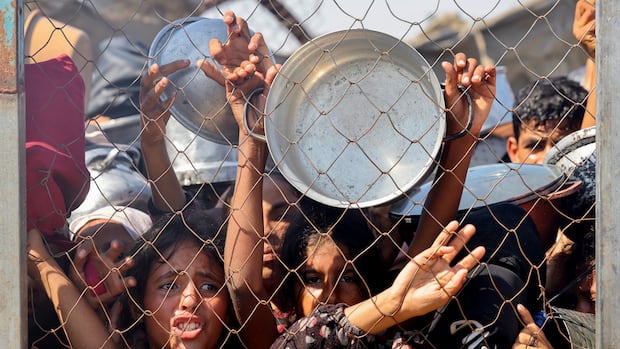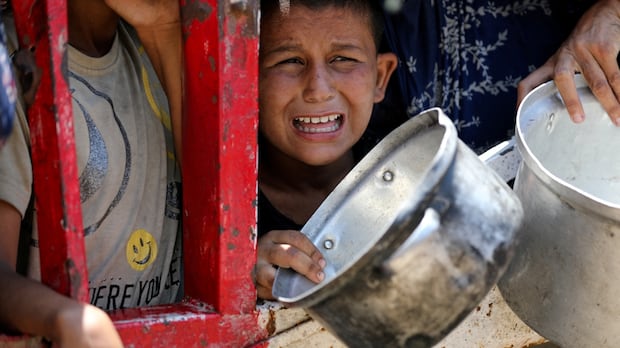While news of the ceasefire plan has brought relief and hope that more aid would flow soon in Gaza, immense hunger still remains.
More than 54,600 children under the age of five in the Gaza strip are estimated to be severely malnourished, according to a new study from researchers with the UN Relief and Works Agency for Palestine Refugees in the Near East (UNRWA) published in the Lancet medical journal yesterday.
The study used upper-arm measurements of children between six months and five years of age to analyze the prevalence of what’s known as “acute wasting” — the most severe and life-threatening stage of malnutrition that requires therapeutic treatment.
Children with arm measurements of less than 125 millimetres were referred into UNRWA’s feeding program. According to Unicef, children experiencing acute wasting are extremely thin and have weak immune systems, which can lead to developmental delays and disease.
The measurements were taken from over 219,000 children at 16 functioning health centres and 78 medical points between January 2024 and August 2025. The study is the most comprehensive study of child hunger in the region to date, the authors said.
“Following two years of war and severe restrictions in humanitarian aid, tens of thousands of pre-school aged children in the Gaza Strip are now suffering from preventable acute malnutrition and face an increased risk of mortality,” said Dr. Masako Horino, a nutrition epidemiologist and lead author for the study, in a statement.
Some 15.8 per cent of children screened were suffering from acute wasting as of August of this year, according to UNRWA. The levels of malnutrition laid out in the study also show hunger intensifying as fighting and blockades became stricter, and lessening during periodic ceasefires.
Seventeen-year-old Ahmed Ali Batniji shares his experience struggling to survive hunger in Gaza. The United Nations and many aid groups accuse Israel of creating a famine by obstructing food deliveries into the territory, which Israel denies.
Dr. Prabhat Jha, professor of global health at the University of Toronto and University of Oxford, said the estimates were nothing short of “shocking” — as was just how much malnutrition fluctuated in correlation with the amount of food aid being let into the strip.
“The study is a wake up call that the levels of malnutrition and of childhood deprivation [have] been really astounding in Gaza,” Jha said.
In a commentary accompanying the study, three experts in child health, nutrition and public policy who were not involved in the research called it the “some of the most definitive evidence” of the extent of malnourishment.
“It is now well established that the children of Gaza are starving and require immediate and sustained humanitarian assistance,” wrote Jessica Fanzo of Columbia University, Paul Wise of Stanford University and Zulfiqar Bhutta of Aga Khan University in Pakistan and the Hospital for Sick Children in Canada.
Israeli Prime Minister Benjamin Netanyahu has previously denied reports of starvation during the war triggered by a deadly Hamas attack on Oct. 7, 2023, saying they were “lies” promoted by Hamas, and telling the media “there is no hunger” in Gaza.
That’s despite long standing warnings from humanitarian groups and medical experts that extreme hunger is having dramatic effects.
Gaza’s health ministry has said 461 people, including 157 children, have died from complications of malnutrition since the war started, most of them in 2025. Hospitals have been overwhelmed with malnourished children, amid a severe shortage of therapeutic foods, according to the ministry. The U.N. and many independent experts consider figures from the health ministry, which is part of the Hamas-run government, to be most reliable.
And in August, the world’s leading authority on food crises declared that famine was occurring in Gaza City, and was likely to spread to other cities including Deir al-Balah and Khan Younis.
Gaza health officials are reporting nine new Palestinian deaths from hunger, bringing the total to 122 since Israel began its attacks on the territory. Dr. Joanne Perry, Canadian medical team leader for Doctors Without Borders in Gaza, says the hunger situation in the region ‘is truly a humanitarian disaster.’
Study details challenges in getting good data
The study authors acknowledge that their sample isn’t perfectly representative — for example, the researchers had to stop data collection in Rafah for some time because of military operations in that area. The researchers were also only able to take a single upper-arm measurement due to resource constraints, which they say could impact how precise the study results are.
Jha also highlights that the study relied on measuring the arms of children who were coming to health checkpoints. He says the most sick kids could be overrepresented because they were the ones whose parents would most likely be bringing them to health centres, or it could have excluded the kids who were too sick or marginalized to make it to the health checkpoints.
Measuring upper-arms as a way to gauge malnutrition is also an imperfect test, according to Jha, because it tends to miss some people experiencing acute wasting.

Given the complications that come with collecting data in an active warzone, Jha says the limitations are understandable. “There’s limitations, but it seems like it was reasonably as well done under the circumstances,” Jha said.
And while a ceasefire is beginning to take effect in Gaza, Jha says the effects of malnutrition are still a concern. Acute malnutrition requires sustained access to food and sometimes hospital treatment to recover from in the first place, and Jha says having experienced malnutrition can impact a child’s ability to succeed in school later on or lead to other chronic health conditions.
“That is a worry that there’s an entire generation of Gaza kids that will have potentially enormous health deficits because of the conflict,” Jha said.








